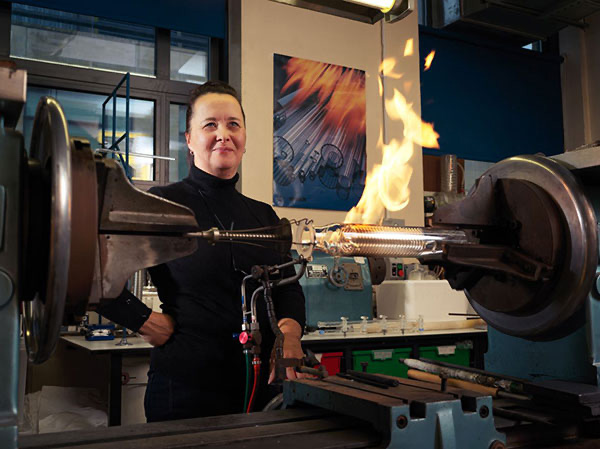[from ScienceNews Coronavirus Update, by Erin Garcia de Jesús]
For all the coronavirus variants that have thrown pandemic curve balls—including alpha, beta, gamma, delta—COVID-19 vaccines have stayed the same. That could change this fall.
Yesterday, an advisory committee to the U.S. Food and Drug Administration met to discuss whether vaccine developers should update their jabs to include a portion of the omicron variant—the version of the coronavirus that currently dominates the globe. The verdict: The omicron variant is different enough that it’s time to change the vaccines. Exactly how is up in the air; the FDA still has to weigh in and decide what versions of the coronavirus will be in the shot.
“This doesn’t mean that we are saying that there will be boosters recommended for everyone in the fall,” Amanda Cohn, chief medical officer for vaccine policy at the U.S. Centers for Disease Control and Prevention said at the June 28 advisory meeting. “But my belief is that this gives us the right vaccine for preparation for boosters in the fall.”
The decision to update COVID-19 vaccines didn’t come out of nowhere. In the two-plus years that the coronavirus has been spreading around the world, it has had a few “updates” of its own—mutating some of its proteins that allow the virus to more effectively infect our cells or hide from our immune systems.
Vaccine developers had previously crafted vaccines to tackle the beta variant that was first identified in South Africa in late 2020. Those were scrapped after studies showed that current vaccines remained effective.
The current vaccines gave our immune systems the tools to recognize variants such as beta and alpha, which each had a handful of changes from the original SARS-CoV-2 virus that sparked the pandemic. But the omicron variant is a slipperier foe. Lots more viral mutations combined with our own waning immunity mean that omicron can gain a foothold in the body. And vaccine protection isn’t as good as it once was at fending off COVID-19 symptoms.
The shots still largely protect people from developing severe symptoms, but there has been an uptick in hospitalizations and deaths among older age groups, Heather Scobie, deputy team lead of the CDC’s Surveillance and Analytics Epidemiology Task Force said at the meeting. And while it’s impossible to predict the future, we could be in for a tough fall and winter, epidemiologist Justin Lessler of the University of North Carolina at Chapel Hill said at the meeting. From March 2022 to March 2023, simulations project that deaths from COVID-19 in the United States might number in the tens to hundreds of thousands.
A switch to omicron-containing jabs may give people an extra layer of protection for the upcoming winter. Pfizer–BioNTech presented data at the meeting showing that updated versions of its mRNA shot gave clinical trial participants a boost of antibodies that recognize omicron. One version included omicron alone, while the other is a twofer, or bivalent, jab that mixes the original formulation with omicron. Moderna’s bivalent shot boosted antibodies too. Novavax, which developed a protein-based vaccine that the FDA is still mulling whether to authorize for emergency use, doesn’t have an omicron-based vaccine yet, though the company said its original shot gives people broad protection, generating antibodies that probably will recognize omicron.
Pfizer and Moderna both updated their vaccines using a version of omicron called BA.1, which was the dominant variant in the United States in December and January. But BA.1 has siblings and has already been outcompeted by some of them.
Since omicron first appeared late last year, “we’ve seen a relatively troubling, rapid evolution of SARS-CoV-2,” Peter Marks, director of the FDA’s Center for Biologics Evaluation and Research in Silver Spring, Maryland, said at the advisory meeting.
Now, omicron subvariants BA.2, BA.2.12.1, BA.4 and BA.5 are the dominant versions in the United States and other countries. The CDC estimates that roughly half of new U.S. infections the week ending June 25 were caused by either BA.4 or BA.5. By the time the fall rolls around, yet another new version of omicron—or a different variant entirely—may join their ranks. The big question is which of these subvariants to include in the vaccines to give people the best protection possible.
BA.1, the version already in the updated vaccines, may be the right choice, virologist Kanta Subbarao said at the FDA meeting. An advisory committee to the World Health Organization, which Subbarao chairs, recommended on June 17 that vaccines may need to be tweaked to include omicron, likely BA.1. “We’re not trying to match [what variants] may circulate,” Subbarao said. Instead, the goal is to make sure that the immune system is as prepared as possible to recognize a wide variety of variants, not just specific ones. The hope is that the broader the immune response, the better our bodies will be at fighting the virus off even as it evolves.
The variant that is farthest removed from the original virus is probably the best candidate to accomplish that goal, said Subbarao, who is director of the WHO’s Collaborating Center for Reference and Research on Influenza at the Doherty Institute in Melbourne, Australia. Computational analyses of how antibodies recognize different versions of the coronavirus suggest that BA.1 is probably the original coronavirus variant’s most distant sibling, she said.
Some members of the FDA advisory committee disagreed with choosing BA.1, instead saying that they’d prefer vaccines that include a portion of BA.4 or BA.5. With BA.1 largely gone, it may be better to follow the proverbial hockey puck where it’s going rather than where it’s been, said Bruce Gellin, chief of Global Public Health Strategy with the Rockefeller Foundation in Washington, D.C. Plus, BA.4 and BA.5 are also vastly different from the original variant. Both BA.4 and BA.5 have identical spike proteins, which the virus uses to break into cells and the vaccines use to teach our bodies to recognize an infection. So when it comes to making vaccines, the two are somewhat interchangeable.
There are some real-world data suggesting that current vaccines offer the least amount of protection from BA.4 and BA.5 compared with other omicron subvariants, Marks said. Pfizer also presented data showing results from a test in mice of a bivalent jab with the original coronavirus strain plus BA.4/BA.5. The shot sparked a broad immune response that boosted antibodies against four omicron subvariants. It’s unclear what that means for people.
Not everyone on the FDA advisory committee agreed that an update now is necessary—two members voted against it. Pediatrician Henry Bernstein of Zucker School of Medicine at Hofstra/Northwell in Uniondale, N.Y., noted that the current vaccines are still effective against severe disease and that there aren’t enough data to show that any changes would boost vaccine effectiveness. Pediatric infectious disease specialist Paul Offit of Children’s Hospital of Philadelphia said that he agrees that vaccines should help people broaden their immune responses, but he’s not yet convinced omicron is the right variant for it.
Plenty of other open questions remain too. The FDA could authorize either a vaccine that contains omicron alone or a bivalent shot, although some data hinted that a bivalent dose might spark immunity that could be more durable. Pfizer and Moderna tested their updated shots in adults. It’s unclear what the results mean for kids. Also unknown is whether people who have never been vaccinated against COVID-19 could eventually start with such an omicron-based vaccine instead of the original two doses.
Maybe researchers will get some answers before boosters start in the fall. But health agencies need to make decisions now so vaccine developers have a chance to make the shots in the first place. Unfortunately, we’re always lagging behind the virus, said pediatrician Hayley Gans of Stanford University. “We can’t always wait for the data to catch up.”


